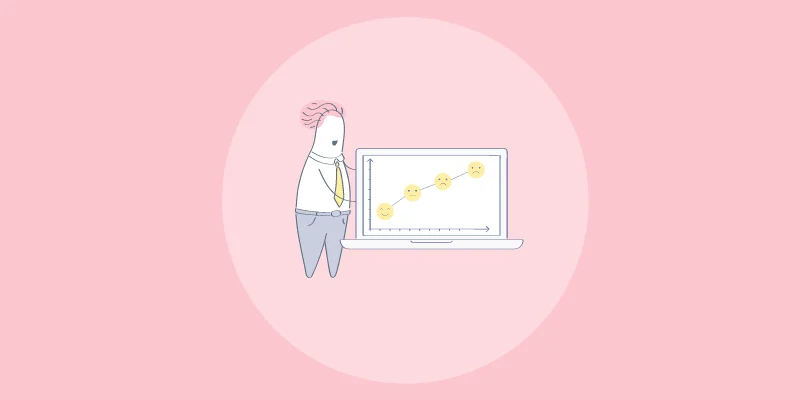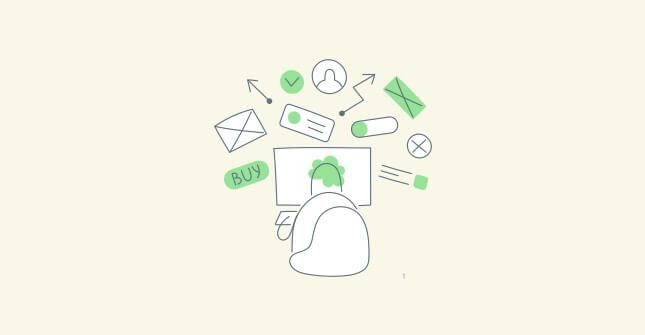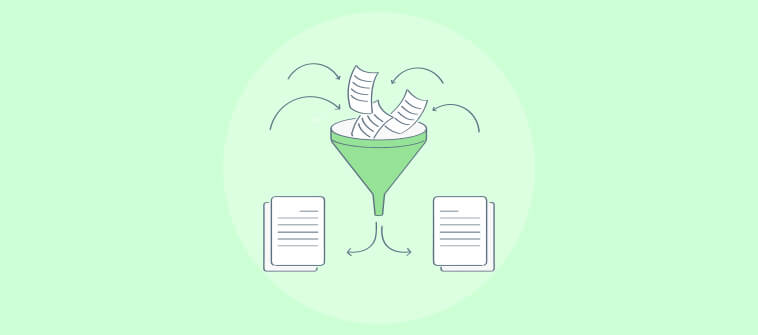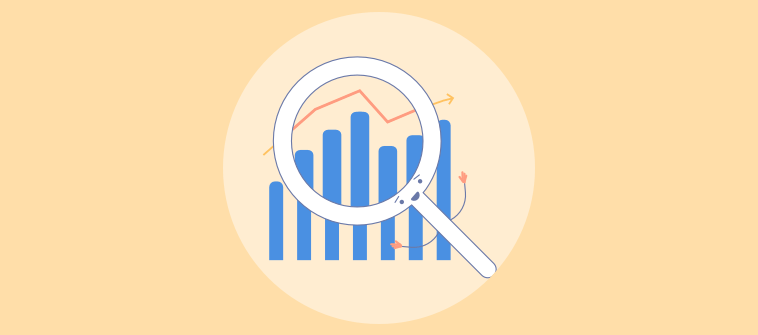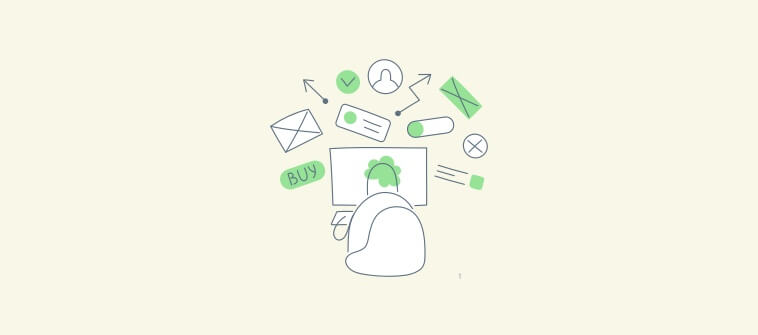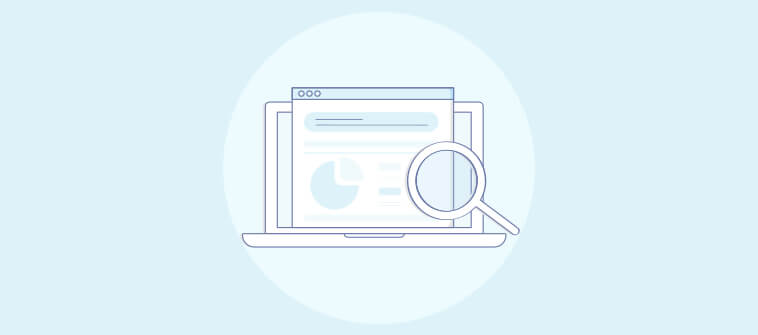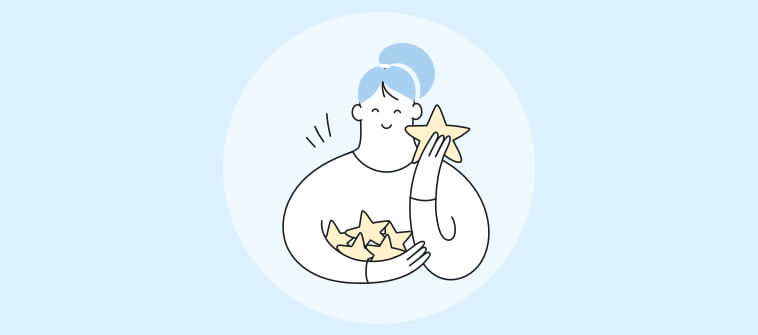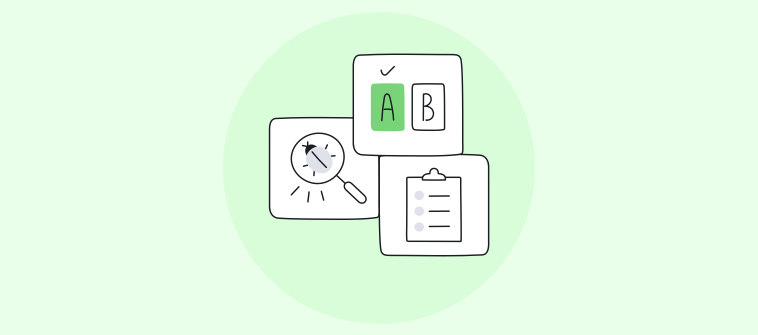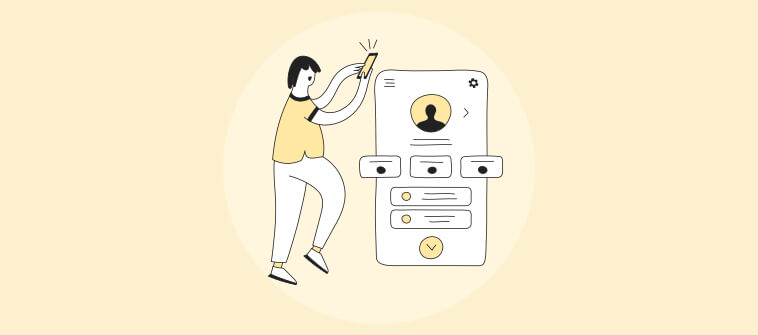
As a SaaS leader, how do you know that your company is meeting its goals?
You probably have a firm grasp on some of the universal metrics of SaaS success: ARR, growth rate, churn rate, CAC, LTV, etc. There is no doubt that these are critical, but in many ways these metrics do not tell the whole story of “success”.
So what’s the leading indicator that can give you a fuller picture of success?
Your customers’ satisfaction.
I mean, ultimately, your company was founded to solve a customer pain point, right?
You can gauge customer satisfaction by monitoring your product engagement and analytics, support tickets, NPS scores or social media sentiment.
However, the best way to gauge customer satisfaction is to gather feedback directly from your user base.
In fact, gathering feedback is one of the most powerful, yet often underutilized tools to reduce your customer churn.
As your company grows, however, it becomes harder to stay close to the customer you serve.
And that’s exactly why it’s so important to stay close to the customer: their goals, challenges, complaints, and feedback.
A great example of prioritizing customer needs can be found at Amazon. In fact, it’s this relentless focus on the customer that has enabled Amazon to be the market giant it is today.
Just take a look at the highest priority in Amazon’s leadership principles:
Customer feedback is the primary channel for staying close to the customer.
If you don’t regularly seek customer feedback, you won’t understand what you’re doing well, and what you need to improve. This leaves you uninformed and prevents you from directing your efforts to do more of the good and less of the bad.
Ultimately, reducing churn stems from how well you can understand and solve your customers problems.
Why Customer Feedback Is Critical for Churn
Discover Causes of Churn
It may not always be clear why your customers churn.
If you connect with customers at the point of cancellation, using a short survey and open-ended questions, you can hone in on why they churned.
If you run these surveys for every churning customer, you’ll start to see patterns emerge. You’ll begin uncovering insights for the following key questions.
- What are the main reasons for churn?
- Do churn reasons correlate with any customer persona? If so, how?
- What can be improved to reduce churn (product, support, messaging, etc)?
Proactively Address Future Churn
In any business, there are always shortcomings and areas for improvement. If SaaS leaders choose to ignore this and don’t listen to the voice of the customer they serve, they’re likely ignoring the problems that their customers are experiencing. These issues can continue to manifest and increase your churn until it’s been identified and rectified.
You can run a variety of data analyses to identify where you are losing customers, but that will not tell you why they are leaving. You can only get that by checking in with customers regularly, particularly after they churn.
Improve Customer Sentiment
A Harvard Business Review study found that even the act of conducting a survey (or getting feedback) can positively impact customer perception:
“…the very process of asking people their opinions can induce them to form judgments that otherwise wouldn’t occur to them—that they really do like a company’s estate-planning services, for example. These so-called measurement-induced judgments…can influence later behavior.”
Tactics For Applying Feedback to Churn
I started Retainable as a service to help B2B SaaS companies reduce churn.
For several years, I was on the opposite end of the growth spectrum, as I was leading the marketing team of a high growth SaaS company. Awareness and Acquisition were the benchmarks that I was responsible for.
Every month, we needed to acquire at least as many customers as had churned in the month, in order to continue on a high growth trajectory. And of course the challenge increases in difficulty as the size of the customer base grew as quickly as it did!
And that is why I firmly believe that getting a handle on customer retention is the first imperative to sustainable SaaS growth.
Solving the broad problem of “churn” is a tall order indeed, as churn is a multi-faceted problem that differs from company to company.
However, I also realized that there is a general framework for how to strategically address customer needs and effectively reduce churn.
As you may have guessed, the first step to establishing a customer retention strategy is to gather feedback directly from customers.
Bonus Read: SaaS Marketing Strategies : Techniques to Grow Your Business
Who to Ask: Insights Based on Customer Segmentation
There are several segments that have unique perspectives and insights related to their customer experience.
- Recently Churned Customers – Why are customers churning out? Answers will generally fall into a few larger buckets: not using it enough, choosing a competitive alternative, too expensive, etc. Cataloging these reasons for churn, and diagnosing where the largest gaps (read: opportunities) are, is the foundation for creating your churn strategy.
- High LTV Customers – These customers are segmented by having the highest lifetime value. They are clearly valuable for their contributions to revenue. However, they also have a demonstrated willingness to pay for your product, so understanding what the various use cases are can unlock tremendous opportunities.
- Most Engaged Customers – These engaged users are not necessarily the same as those who pay you the most money. Instead, these users are segmented by their product usage. Understanding which features are valued, and why, is a valuable piece of feedback that you can gather from these engaged users.
- Disengaged Customers – These users were at one point convinced that your product held the answers to their problems. Unfortunately, somewhere along the line, they became inactive users. Understanding what their problems are, and how you could potentially solve them, is where your retention strategy gets its meatiest feedback.
In a recent interview, Qualaroo shared with SatisMeter how they utilize this exact type of customer segmentation to measure usage score, an in-house metric developed by team member, Michael Nadelman.
“The usage score allows us to predict which customers are at high risk for churn within the next 3-6 months and to personalize communication across different segments of our customers based on their usage score. To calculate usage score, we use a number of data points like how many active Nudges™ a customer has per month, which advanced features they use or how many and which integrations they utilize and more. This is then combined with a plan type. We continuously improved the Usage Score over several months and now it proves to be a reliable and very helpful metric for our business.”
When Should You Gather Feedback? Here are some examples!
Onboarding
The first moments of a user signing up for a product and experiencing it are critical junctures in delivering value and positioning the product for long-term retention.
This is also a time to gather some feedback to better understand the user’s end goals. This can be related to their job type, role, potential use cases, and more.
Notion, a popular app that describes itself as an “All-in-one workspace”, clearly has many use cases and customer personas.
They have a simple step-by-step onboarding flow, but capture a few key pieces of information that helps them create a more relevant onboarding experience:
Shortly after signing up, I received my first onboarding email. The email, and the product experience itself, were crafted to address the criteria that I selected. This is a great way to leverage user feedback and made it as simple as possible to understand the value I get from Notion.
Offboarding
What process do your users go through before they churn? Do you have an offboarding process, to get additional insights on why they decided to cancel their subscription?
Even quick and simple exit surveys can provide great insights into why a user churned. And once you have this data, you can incorporate additional data points to paint the full picture of the customers who churn, and what their behavioral patterns are.
If you gather feedback for every customer who cancels, you can quickly start identifying patterns of reasons for churn, where there are gaps in the product, customer support, or misaligned expectations of what the customer was hoping to achieve.
Click Funnels has a polished offboarding process, which you can experience for yourself here:
As with any basic offboarding experience, it captures the user’s reason for churn with an interactive multiple choice menu.
But it is the next step that differentiates Click Funnels in terms of how it addresses the customer objections and challenges:
There is an (autoplaying) video with the personable founder of Click Funnels, Russell Brunson, offering additional resources and encouragement to help the user extract more value from the product.
Quick links to other resources provide more support to help the user, and even an option to pause the account (instead of outright canceling) all work towards reducing customer churn.
In app
When a user is in your product, you want to tread delicately on how you impact the user experience, while also gathering constructive feedback.
Simple one-click surveys are a great tool here to gauge the pulse of the customer. These can be non-intrusive, single click tools that don’t negatively impact the customer experience.
Tools like Qualaroo, YesInsights, or Wootric allow for an easy implementation so you can get a simple in app survey.
Here is a sample of how an unobtrusive survey can appear In App with Qualaroo’s SDK:
Quarterly Check Ins
Oprah has been known to say, “Great communication begins with connection.” Amen, Oprah.
And for your SaaS business, it is vital that you have these open lines of communication.
You can automate and scale this, by setting up simple quarterly check in emails.
“We value your opinion, do you have any questions or challenges that we can help you with?“
Alex Turnbull, CEO of Groove, shares a template that he uses to check in with customers and to keep a close feedback loop with users.
By checking in with customers through this simple email, Groove demonstrates they care about their customer’s level of satisfaction, unique challenges and overall user experience.
Take Action: What To Do With Feedback
You have put in the work to establish a deeper understanding of your customer needs.
You can leverage this to improve your customer retention and keep customers longer by reactivating churned customers, and driving more revenue from your existing customers.
Reactivation Campaigns
Because you have already gathered direct feedback on why customers have churned, you can use that as guide-posts for improving your future efforts–starting with the same churned customers who gave you the feedback.
Because you know exactly what their gripes were, you can craft a specific and compelling message to bring them back.
Note that you should only initiate these reactivation campaigns when you have made notable improvements in the areas that were mentioned as the reasons for churn.
If you prematurely reach out and bring a customer back to an experience that does not meet expectations, you will create a frustrated non-customer, and likely not have a chance at re-acquiring the customer at any point in the future.
You reactivation campaign should address the objection (the reason for churn), the solution (the improvements), and underscore the benefits that your product offers.
Additionally, you can offer a discount or incentive as a gesture of goodwill and to lower any resistance to signing up.
Upsell And Cross Sell Campaigns
You can also take actionable steps towards driving revenue based on feedback with upsell campaigns.
Timing and targeting are crucial variables for effectively pitching an upsell.
Have you ever decided to buy the internet/cable/phone package right after you had to troubleshoot your current package? I’d guess the answer is no.
Additionally, upsell campaigns are built on a relationship of trust, and a history of delivering value.
After you have a proven record of solving customer challenges, and you have a relationship in which there is established trust, you have an idea of WHO you can upsell to.
Piecing together the data points from feedback, product engagement, and customer profile of a given user, you can create a relevant offer.
Relevancy is critical to the success of your upsell efforts.
You will have to reiterate the benefits of the upsell, how the customer’s experience will improve with their new plan, and perhaps even offer a discount to help get them a taste (ie free trial or discounted price) of the upgrade.
Here is an example of how Buffer positions its upsell to Annual billing. This includes a reaffirmation of the value provided (“managing social media marketing”), the incentive (“save 15%”), and addressing potential objections (“happily refund you for any unused time”):
This type of upselling opportunity can be identified by monitoring customers who are active users, candidates to upgrade to an annual membership and have engaged in feedback surveys or who have recently become promoters.
Build an Informed Help Center
Qualaroo has a comprehensive library of resources to help customers, from the first steps of enabling the product on your website, all the way through to Advanced topics and strategies.
These support articles, guided by both inbound support tickets and customer feedback, minimize the likelihood of a customer frustrated with the product experience. As the patterns emerge of what customers need help with, you will start building out a tailored list of articles.
This is a critical component to helping users get onboarded and engaged with the product. Shortcomings in this stage can lead to dissatisfied customers that churn out.
Conclusion
Hopefully the “Why” and the “How” of customer feedback is abundantly clear now.
For many companies, the Customer Support team is on the front lines, with the closest proximity to customers.
However, the ramifications and benefits of customer feedback range across the whole organization, making it imperative for future success to implement a regular practice of gathering customer feedback.
In doing so, you will identify your most ardent supporters, engaged users, and effectively peel back the layers on why customers love (or don’t love) your product.
Each data point gathered can help you improve your shortcomings. And the benefit here is that you will be better-equipped to anticipate and address your customer needs, and most importantly retain them with greater success.
If you are not able to retain users on an ongoing basis, you will be forced to furiously acquire new customers simply to replace your churned users. Hearing directly from your customers, from the raw, negative feedback to the glowing pats-on-the-back, will help you understand the qualitative element that your product analytics and churn numbers can not tell you.
So, in short: Speak to your customers. Your company’s livelihood relies on it.
How do you leverage customer feedback at your company? Feel free to email me at gen@retainable.com. I’d love to hear from you!
This post was written and contributed by Gen Furukawa of Retainable.
Reads
Want insights that improve experience & conversions?
Capture customer feedback to improve customer experience & grow conversions.
